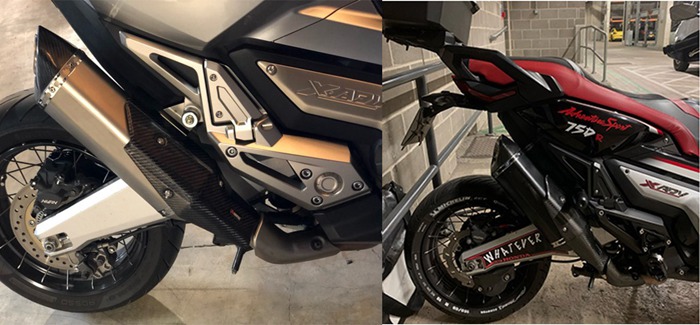Motorcycle Exhaust pipes play a crucial role in the overall performance and function of a motorcycle. They are responsible for directing exhaust gases away from the engine and reducing noise levels. Additionally, a well-designed exhaust system can also improve the motorcycle's power output and fuel efficiency.
One common practice among motorcycle enthusiasts is to wrap the exhaust pipes with a heat-resistant material. Here are a few reasons why people choose to wrap their motorcycle exhaust pipes:
1. Heat insulation: Wrapping the exhaust pipes helps to reduce the transfer of heat from the pipes to other components of the motorcycle, such as the fairings and seats. This can significantly improve rider comfort, especially during long rides or in hot weather conditions.
2. Performance enhancement: By keeping the heat within the exhaust pipes, wrapping them can help to increase the velocity of the exhaust gases. This improved airflow can enhance the engine's scavenging effect, resulting in better combustion and increased power output. Moreover, the reduced heat dissipation can help to maintain optimal exhaust gas temperature, which is vital for efficient emission control.

3. Reduced heat damage: High temperatures can cause discoloration and even damage various materials on a motorcycle, including paint, plastic, and rubber. By insulating the exhaust pipes, wrapping them can protect surrounding components from heat-related damage, extending the lifespan of these parts.
4. Visual appeal: Apart from the functional benefits, wrapping the exhaust pipes can also enhance the aesthetic appearance of the motorcycle. Different wrapping materials are available in various colors and textures, allowing riders to customize their bikes according to their preferences.
When wrapping motorcycle exhaust pipes, it is essential to choose the right materials. Typically, heat-resistant materials such as fiberglass or thermal wrap are used for this purpose. These materials can withstand high temperatures and are designed specifically for exhaust pipe insulation.
Here are a few steps to follow when wrapping motorcycle exhaust pipes:
1. Begin by cleaning the exhaust pipes thoroughly. Remove any debris, grease, or dirt that may be present on the pipes.
2. Measure the length of the exhaust pipes and cut the wrapping material accordingly. It is recommended to leave some overlap at both ends for a secure fit.
3. Start wrapping from the end of the pipe, ensuring that the material is tight and evenly spaced. Use high-temperature resistant wire or stainless steel zip ties to secure the wrap in place.
4. Continue wrapping the material along the entire length of the exhaust pipe, overlapping each wrap slightly. Pull the material tight as you proceed.
5. Once you have reached the end of the pipe, secure the wrap using wire or zip ties. Trim off any excess material.
6. Finally, start the motorcycle and let it idle for a few minutes to allow the wrap to settle and conform to the shape of the exhaust pipes.
It's important to note that wrapping motorcycle exhaust pipes may have some drawbacks. For example, the increased insulation can cause the exhaust pipes to retain more moisture, potentially leading to corrosion. Additionally, wrapping the pipes may also impact the warranty of certain motorcycles.
In conclusion, wrapping motorcycle exhaust pipes can offer several benefits such as heat insulation, improved performance, reduced heat damage, and enhanced visual appeal. However, it is essential to choose the appropriate materials and follow the correct steps to ensure a safe and effective installation.
Previous: what motorcycle exhaust is loudest